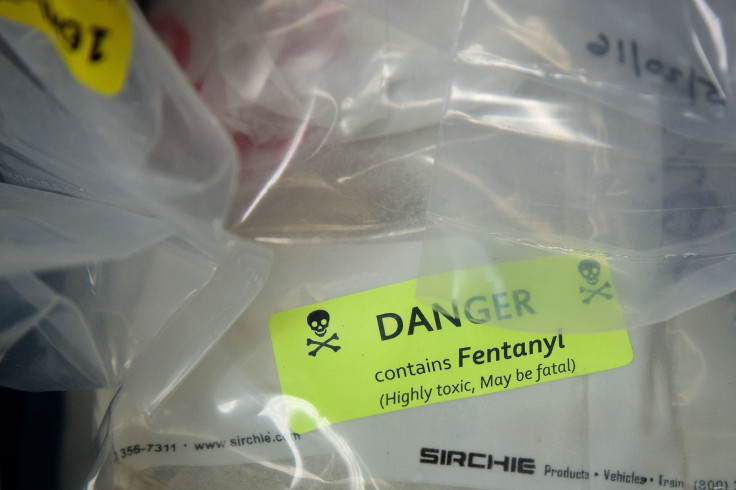2 Phoenix Police Officers Potentially Exposed To Fentanyl

Two officers from the Phoenix police department were taken to a hospital Tuesday night due to possible exposure to a substance believed to be fentanyl.
The Phoenix Police Department confirmed that the two officers came across a “white powdery substance” after they arrested a subject near 43rd Avenue and Cactus.
The department told local media that one of the officers reportedly felt dizzy and lightheaded after he touched the powder. The other officer did not show any symptoms of exposure initially, however, he began to feel dizzy by the time he was taken to the hospital.
Both the officers, belonging to Phoenix police’s Cactus Park precinct, were in a stable condition, local news channel KNXV-TV reported.
The Phoenix fire captain Rob McDade said he was concerned about growing number of such calls. “Our folks are getting I contact with it, PD’s getting in contact with it, and it’s scary, so we’re all changing the way that we handle these calls — universal precaution — gloves, aspirated masks if we can,” he said.
The drug fentanyl is 50 times stronger and more potent than heroin and 100 times stronger than morphine. According to the Drug Enforcement Administration, fentanyl can cause an overdose with an amount the size of a grain of sand.
It was called the “most dangerous drug epidemic this country has ever faced” by Doug Coleman, special agent in charge for the Phoenix division of the DEA. He said it’s a drug that puts all first responders at risk every day, according to a report by KNXV-TV.
In order to prevent such incident, the DEA along with the Centers for Disease Control and Customs and Border Protection had earlier made special videos with warnings about the risks associated with exposure to the drug. First responders were shown these videos over and over again. Regular seminars and workshops were also held to inform the first responders, police officers, deputies and troopers of the dangers of the drug and were warned not to field test any substance that might contain fentanyl. Several medical experts also said that exposure to fentanyl could come in various means and the drug could be found in several forms — from tablets and powders and capsules to rocks and nasal sprays.
The Department for Public Safety in Arizona took several measures to protect troopers from exposure. In 2017, it stopped testing any “white powdery substances” in the field and it had to be taken to a crime lab. Troopers and first responders were ordered to wear protective clothing and gloves while handling any drugs.
© Copyright IBTimes 2024. All rights reserved.











